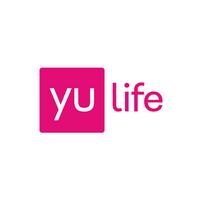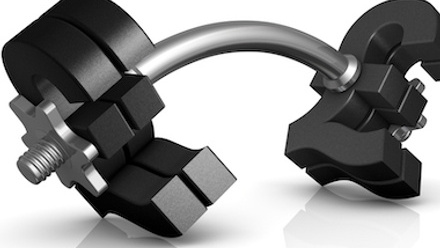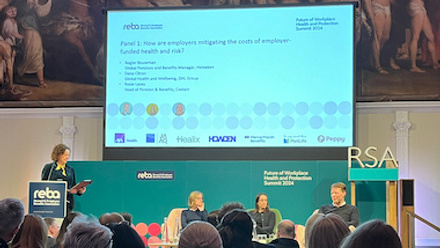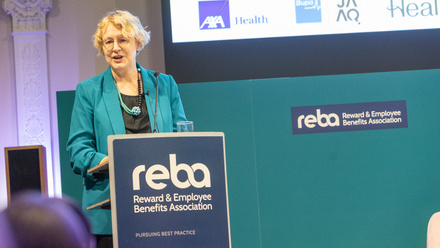How to ensure your health and risk benefits are equitable for all employees, not just senior staff

Recent research from Opinion Matters, commissioned by SocialChorus, found that half of HR respondents admitted to prioritising employees in the office, with just 12% considering deskless workers.
Companies need to know that they are investing their spend in benefits packages with proven return on investment (ROI) for retention, recruitment and increased productivity. Health and risk benefits have traditionally catered to senior management, precisely because the ROI at the office level is much better understood.
However, the Covid-19 crisis has reminded us that health and protection should not just be for the more senior members of the workforce. Deskless workers, particularly those on the frontline – from supermarket employees to factory workers and delivery drivers – are the ones who have suffered the most at the hands of the pandemic, and are experiencing some of the lowest levels of wellbeing as a result.
What’s more, there are real costs associated with losing deskless workers to poor wellbeing and burnout. A 2012 study by the Center for American Progress found that it costs 16% of annual salary to replace an employee working a high-turnover, low-paying job earning under $30,000 a year.
Many are calling for employers to address the inequality in protection and perks, so these workers who continue to risk their health for the benefit of society can be afforded the same level of wellbeing and security as office employees.
Businesses now have an opportunity to bridge the gap and create a more level playing field. So, how can you ensure your health and risk benefits are protecting and incentivising people at all levels of your business?
Offer financial protection
There’s an awful lot on people’s minds right now, and providing an extra layer of financial protection can help them to focus on other priorities. Investing in group risk insurance, which underwrites the business and not the individual, makes it possible to extend fair treatment, coverage and benefits to all employees in your company.
Businesses must consider how their investment in insurance is spent to ensure it is done so in a way that is proactive and accessible for all. From the frontline workers to those in warehouses and young workers just starting out; companies can provide cover for individuals who wouldn’t be able to get life insurance on their own.
Small steps drive positive behaviours
With the spotlight now firmly on healthy living, it’s no surprise that benefits related to wellbeing are high on the priority list among employees. Our recent survey with YouGov on Building an inclusive wellbeing programme for frontline workers revealed that, three in five UK employees would feel more motivated in a workplace that prioritised their wellbeing. Thus there is a huge opportunity to engage an audience who greatly desire the tools to pursue better mental and physical wellness.
When offering support, it is important to take a holistic view that considers all angles of health and wellbeing, from prevention to early intervention. One of the most effective ways that employers can help people make positive changes to their lifestyles is by encouraging micro-habits.
Educating staff around self-care can help them learn how to lead healthy lifestyles by making positive behaviour changes, like increasing physical activity and practicing regular mindfulness. The outcome of this investment is significant – happier workers are more motivated and productive – so having this support in place across all levels of the business is fundamental to success.
Embrace the latest tech
To create a benefits strategy that is equitable for everyone, employers need to move with the times and provide perks that are easy to access and drive utilisation.
Connecting all aspects of your wellbeing strategy into a coherent package and limiting the number of touchpoints for employees looking to access them is important, and delivering it through the right technology can make a huge difference to engagement.
It is vital to provide benefit solutions that meet young people and other deskless workers where they are at: their smartphones. Meditation apps like Calm or Headspace have proven success in democratising regular mindfulness practice, serving people when they need it most.
Reward employees for living well
When implementing a health and wellbeing strategy, you shouldn’t just aim for a temporary effect, but promote long-term habits that help colleagues lead longer, healthier lives. Incentives are a good way to do this. Not only do discount schemes help employees feel supported and give lower-paid workers ways to save some extra cash, but using them to regularly reward healthy behaviours is a great way to encourage their continuation.
It’s important to offer a variety of rewards that match the diversity of your workforce, as not everyone will be interested in the same things.
Actively promoting and facilitating healthy living will ultimately help to build a positive and engaging culture in your company. This will not only benefit your business but your employees and society more generally.
This article is provided by YuLife.
In partnership with YuLife
YuLife is the first digital life insurance provider on a mission to inspire life.







